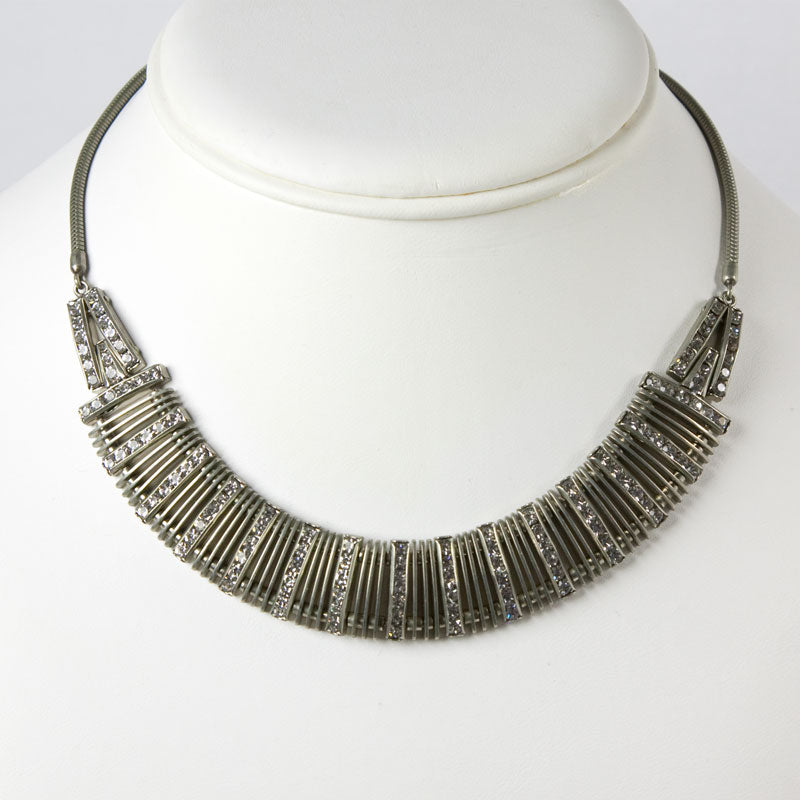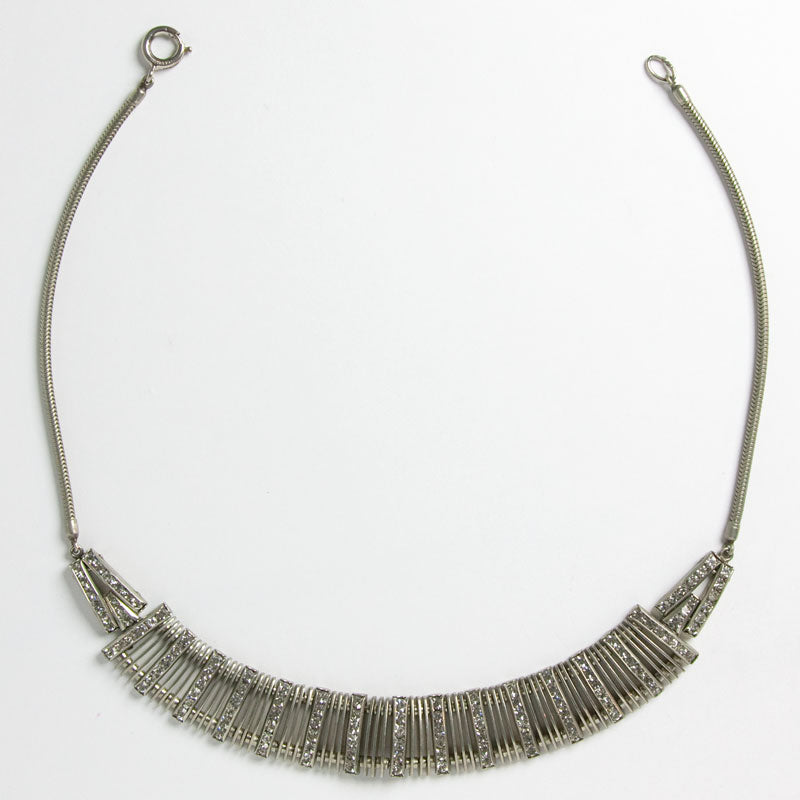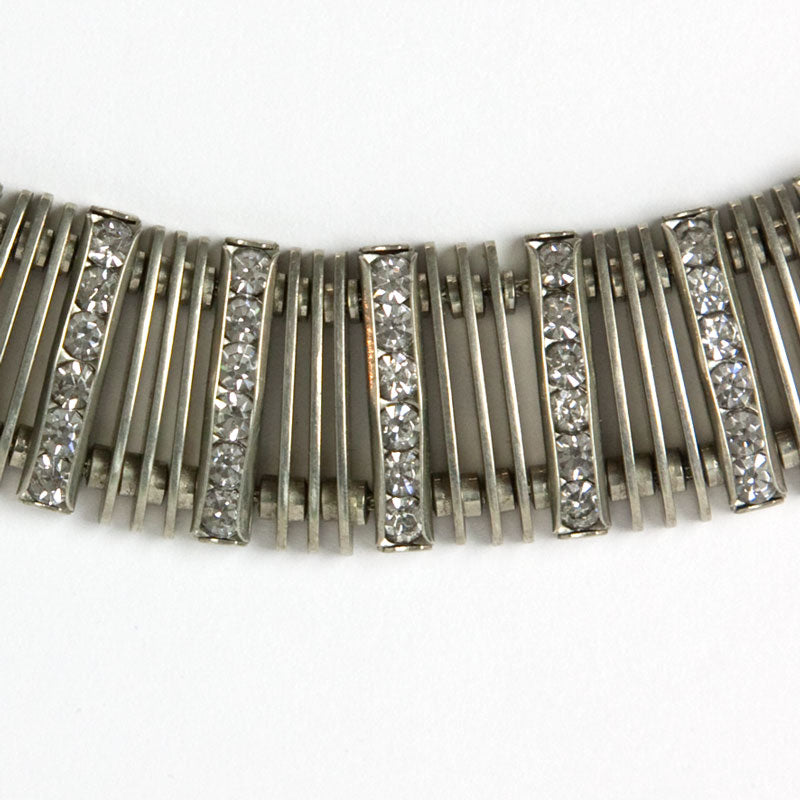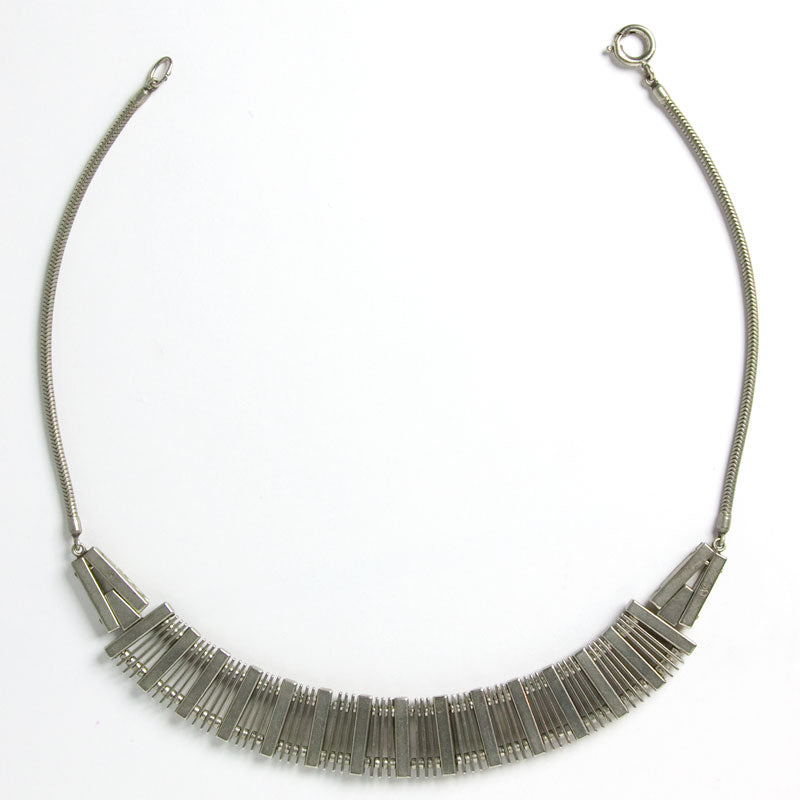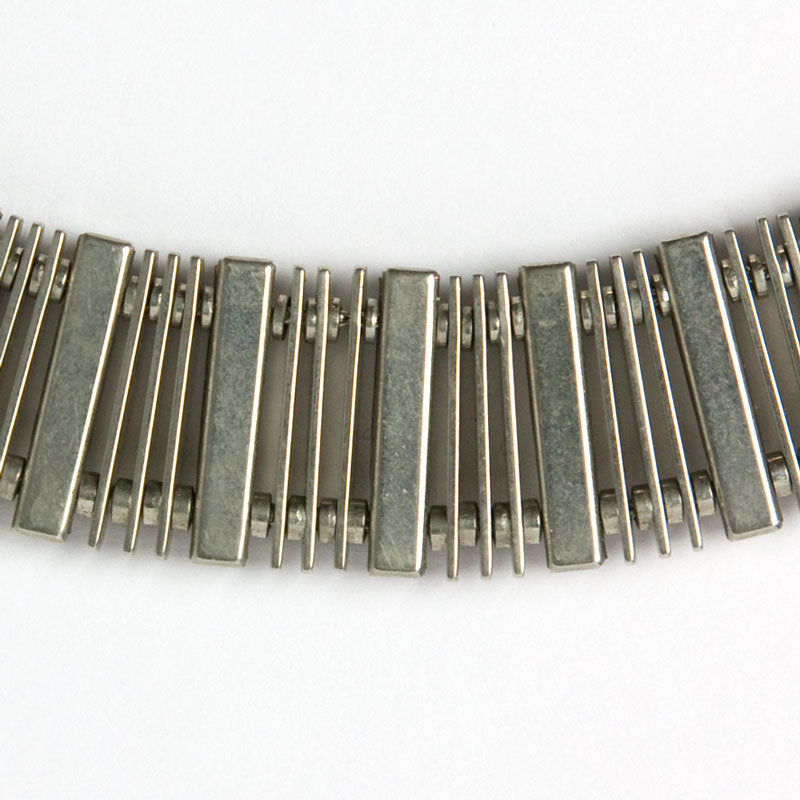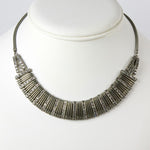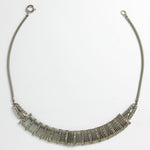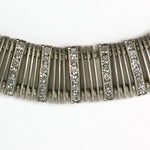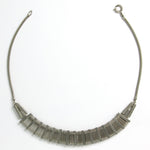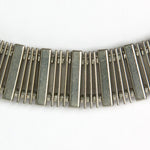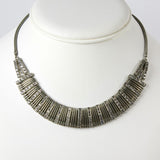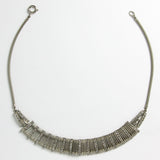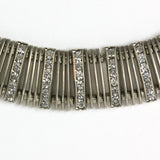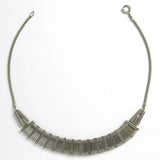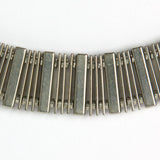Diamanté German Snake Chain Necklace
MAKER: Unsigned
SIZE: 14 1/2" x 5/8" (at widest)
CONDITION: Excellent
DATE: 1930s?
MARKS: "DoSo" on link; "GERMANY" on clasp
REFERENCE:
This snake chain necklace from Germany has a curved centerpiece with a Machine Age-look. The white-metal links with channel-set stones are separated by trios of flat-metal links. All are connected with flat disks at the top and bottom (probably to cover a connecting chain). At each end is a triangle-shaped element formed by two long and one short link with channel-set stones. This piece closes with a spring-ring clasp. Although I had always associated snake chains with the 1940s, I just learned that they were first introduced in 1850. This necklace has a maker’s mark, but I have been unable to identify the company. Although this necklace was made for a slim neck (the length is 14 1/2″), you could add a chain extender if needed. The absence of an adjustable closure makes me think this piece was made before the 1950s. Scroll down to see a bracelet by the same maker.
FREE SHIPPING to the United States and Canada
Why Buy Vintage Costume Jewelry?
One reason is that it’s environmentally friendly. Resale fashion and vintage jewelry has become a preferred sustainable and affordable shopping choice by today’s discerning fashion and eco-conscious consumer.
Another major reason is the quality. Although vintage costume jewelry was made for all levels of the marketplace – from dime stores to high-end fashion boutiques and jewelry stores – you will find only the best pieces here. They were well-designed and carefully made to last. The manufacturers represented here used only the finest materials – glass stones and beads from Bohemia, Austria, and France, and faux pearls from France and Japan. Settings were primarily sterling silver, gold-filled, or base metals heavily plated with gold, silver, or rhodium. Stones were hand-set, and pieces were hand-finished.
The northeastern part of the U.S. was the center of the industry, with the largest companies located in Providence, Rhode Island by the end of World War II. During the Depression, the quality of costume pieces climbed to new levels when many jewelers and craftsmen had to switch to this segment of the industry. In addition, it attracted many skilled workers who fled the political situation in Europe for the U.S. For these reasons, designs and manufacturing techniques rivaled those employed in the making of fine jewelry.
A third reason to buy costume jewelry is its uniqueness. Having survived for so many decades in such wonderful condition and having been selected for their aesthetic quality, the pieces you’ll find here are unlikely to be found elsewhere.
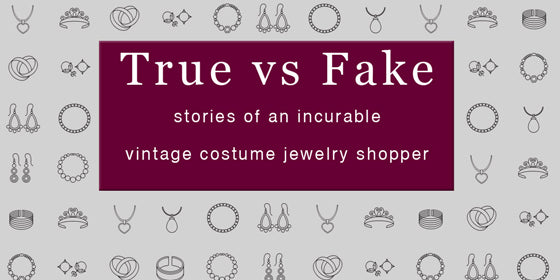
True vs Fake - how to shop vintage costume jewelry with confidence
Barbara Schwartz, a noted costume jewelry historian, is the author of "True vs Fake" , an in-depth blog series providing examples of how vintage costume jewelry can be accurately attributed. She also shares tips on how to avoid being duped into buying misidentified vintage costume jewelry.

